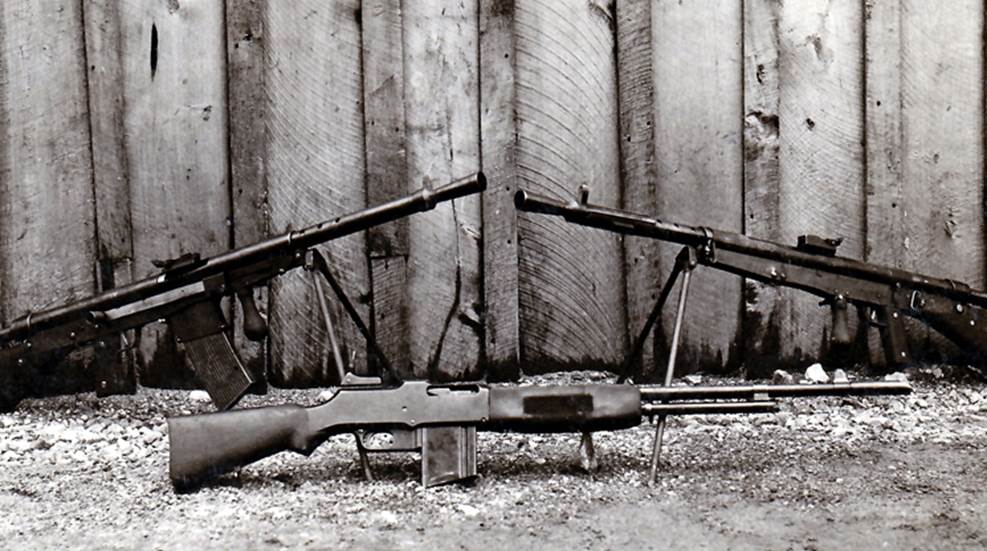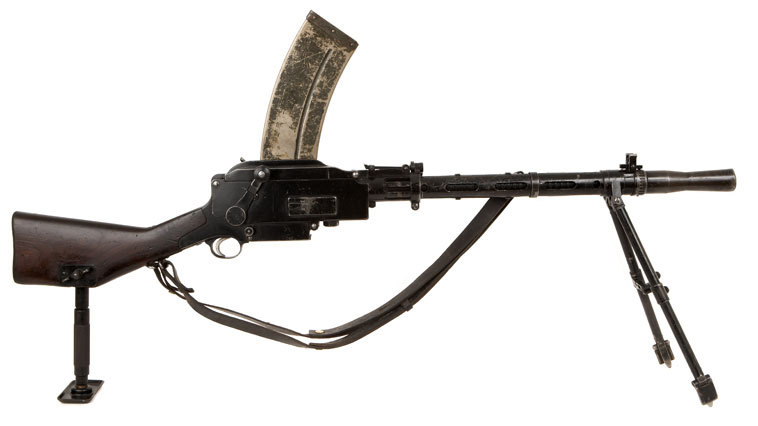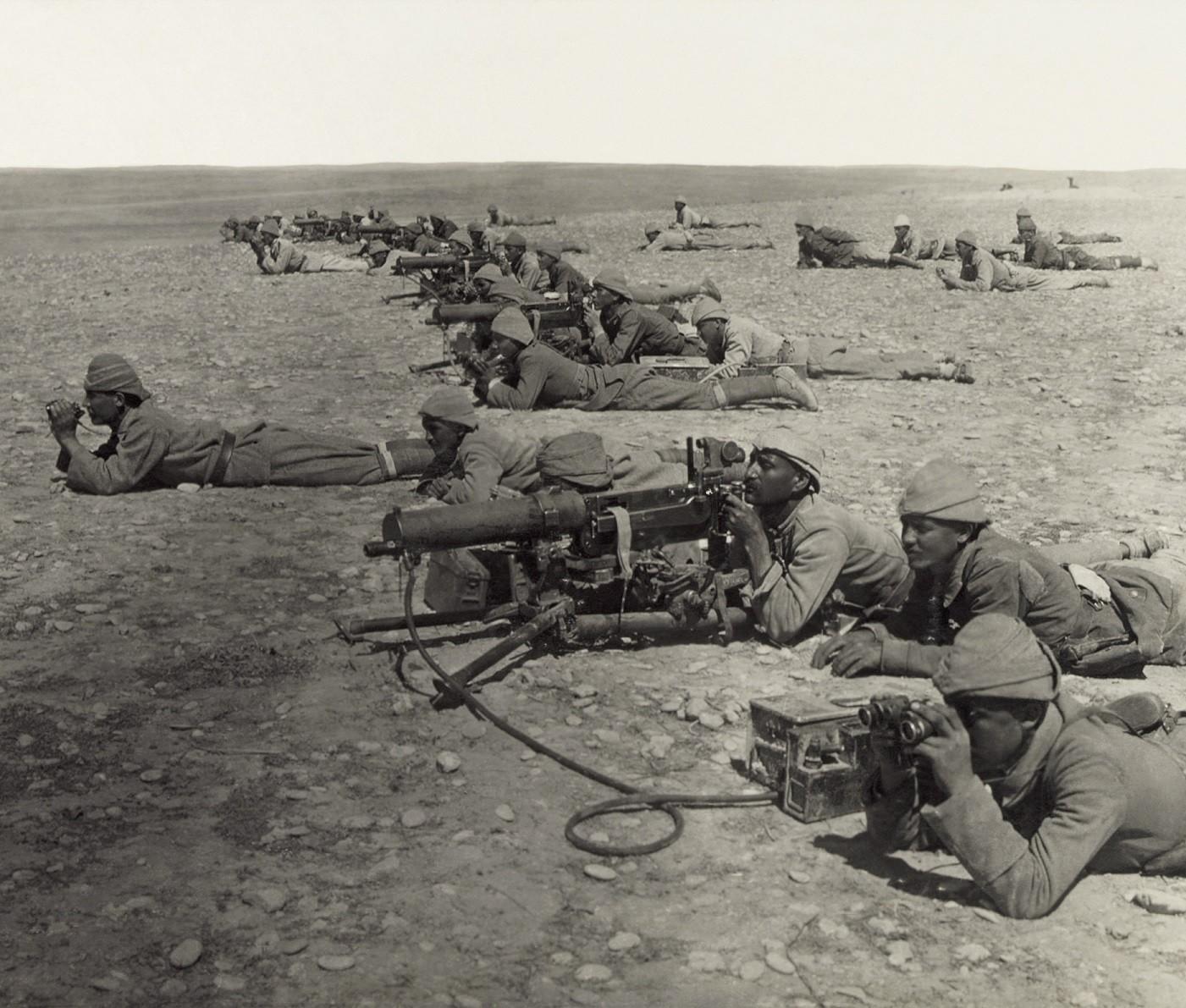Depending on the gunner and conditions, a barrel change could be needed as typically as every 200 to 250 rounds. When the hot barrel was gotten rid of, it was set aside until it was cool enough to utilize once again. Machine-gun teams would have as many as six extra barrels on hand.
Driving through a just recently secured area in Belgium, the sharp-eyed Liniewski spotted the deserted weapon in a field. Liniewski then did what any not being watched GI would have carried out in that position; he stopped his truck and took the opportunity to snag a terrific keepsake for the folks back home. As a support soldier, Liniewski was not familiar enough with weapons to dismantle his MG-42, so he held on to it for a while up until he found a camp where German prisoners of war were being held.
The weapon remained in the Liniewski household till 2016 when his kid Marty donated the weapon to the Museum. In spite of its tendency to get too hot, the MG-42 was an outstanding weapon that was light-years of ahead of the US equivalent, the Browning M-1919A4 device gun. Germany produced approximately 400,000 MG-42s throughout the war, a few of which are still in active duty.

Taken together, all these weapons offered the Red Army a more useful series of assistance weapons, much better able to challenge the Germans for fire supremacy on the battleground. Completely illustrated, this study explains the technology and the tactics of these machine weapons. Noted authority Chris Mc, Nab sets out how these gatling gun were distributed and tactically used and provides many examples of the weapons in action, from assault groups on the streets of Stalingrad to tank crews struggling for survival at Kursk.
What Does Weapons Of The Western Front Do?
Illustrated with high-quality pictures and specially commissioned art work, this is a deep analysis of these vital tools of warfare within the Soviet forces.
Taken together, all these weapons gave the Red Army a more useful variety of support weapons, much better able to challenge the Germans for fire supremacy on the battlefield. Totally illustrated, this research study discusses the technology and the methods of these device weapons. Noted authority Chris Mc, Nab sets out how these maker guns were dispersed and tactically applied and supplies numerous examples of the weapons in action, from attack teams on the streets of Stalingrad to tank crews having a hard time for survival at Kursk.
Illustrated with top quality photographs and specifically commissioned artwork, this is a deep analysis of these vital tools of warfare within the Soviet forces.
The device weapon business, commanded by a captain, had an assigned strength of six commissioned officers and 172 gotten males, and carried 16 weapons, 4 of which were spares. Within the business there were three armies and a headquarters section. A first lieutenant led the first squadron, while second lieutenants led squadrons 2 and three.
Indicators on 7 Machine Guns America Took To Wwi You Should Know


Within each section were 2 weapon teams, each with one weapon and 9 men, led by corporals. The gun team had one battle cart, pulled by a mule, to transfer its weapon and ammo as near the shooting position as opponent fire permitted. From there the teams moved the weapons and ammo forward by hand.
The battalion had a strength of 16 officers and 377 enlisted guys and was motorized. Nevertheless, it had only 2 business, identical to the other gatling gun companies in terms of workers and weapons. Each gun squad utilized an unique motor automobile to carry its workers, weapon and equipment. The battalion was normally in department reserve, ready to carry out missions as the division commander bought.
In this role the guns were positioned 300 to 1000 meters to the rear of the cutting edge. When they employed their weapons because style, the device gun officers frequently encountered opposition from the rifle company commanders, who chose to have the guns further forward, fearing that their infantrymen would be at danger of stray low rounds as they advanced under the overhead machine gun fire.
They soon discovered that the machine guns were high priority targets for enemy fire, and that it was advantageous to have the weapons at some range from the infantry positions. Given that enemy maker weapons positioned the best risk to the assaulting soldiers, the gatling gun crews made every effort to locate the opponent weapons and to focus their fire upon them.
The smart Trick of Trench Warfare And The Development Of The Light Machine Gun That Nobody is Discussing
A proportion of the weapons was held back as a reserve under command of the gatling gun officer. 6Machine gun tactical teaching determined that in the defense the Hotchkiss guns should just seldom lie within 100 backyards of the front line which a minimum of two-thirds of the guns need to be echeloned back through the whole protective position, situated so that adjacent weapons would be equally supporting.

7 To discover other functions on the see our THE DOUGHBOY CENTER wants to constantly expand this feature. Additions and comments on these pages might be directed to:.
I was impaled on this. My only worry was that he would press the trigger which would have made a hell of a mess. In the meantime, my sergeant who was near he saw me; was available in close; shot the fellow and then hoisted me, with the aid of another male, off the bayonet.
He was dead and it wasn't enjoyable. A bayonet wound directly it enters it injures and the withdrawal is most likely further anguish than the 'putting in' because the 'putting in' is rapid. Another kind of weapon was the trench club. These could be employed on trench raids and in close quarter combating.